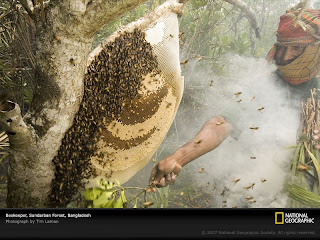BEAUTY OF SUNDORBHON:
The beautiful sundorbon forest is the located in the khulna region of Bangladesh. It is famous for it’s natural beauty, Royal bengal, deer, mangrove forest and claimity.Now it is running towards the apex position of world wonder’s among the several world beauty place,area,natural and arificial creature.Sundarban has the world largest mangrove forest and natural habitat of Royal Bangal Tiger. Most populer tourist place in Bangladesh. MAIN ATTENTION:
Wildlife photography including photography of the famous Royal Bengal Tiger, wildlife viewing, boating inside the forest will call recordings, nature study, meeting fishermen, wood-cutters and honey-collectors, peace and tranquility in the wilderness, seeing the world's largest mangrove forest and the riverine beauty. Sundorbon selected as one of the new seven wonders of the world!
SOME BRIEFING OF SUNDORBONS : The government of Bangladesh has recently provided an updated Ramsar Information Sheet on its Sundarbans Ramsar site, first designated for the Ramsar List in May 1992, enlarging its area from 596,000 to 601,700 hectares. Now to be called "Sundarbans Reserved Forest", this Ramsar and World Heritage site is one of the most important mangrove forests in the world and has been significantly threatened from a number of directions for many years. The nearby Sundarbans mangrove forest across the border in India is not yet a Ramsar site but it is hoped that it will be soon. Ramsar's Liazzat Rabbiosi has distilled from the new RIS a brief summary of the site's main ecological and cultural features, and that's available, with photographs, right here. The Sundarbans Reserved Forest ('the Beautiful Forest') is located between 21°27' and 22°30'N, 89°02' and 90°00'E at the confluence of the Ganges, Brahmaputra and Meghna rivers, which together with the innumerable small channels and creeks flowing into the Bay of Bengal dissect the whole area creating the largest contiguous mangrove forest in the world. The site is a hotspot of rich flora and fauna, home to a number of unique and globally or nationally endangered species of plants like rare Sundri (Heritiera fomes), Gewa (Excoecaria agallocha), Passur (Xylocarpus mekongensis), animals like endangered Royal Bengal Tiger (Panthera tigris tigris), vulnerable Pallas Fishing Eagle (Haliaeetus leucoryphus) and Masked Finfoot (Heliopais personata), and critically endangered River Terrapin (Batagur baska), all listed in the IUCN Red Book, rare species of shark (Glephys gangeticus) and very rich avifauna with 315 species of which 84 are migratory. At this transitional zone between freshwater supplied by rivers and saline water pushed by high tides from open sea, many fish species such as Penaeus monodon, Macrobrachium rosenbergii, Lates calcarif, Metapeneaus monoceros and Pangaisus pangaisus depend for spawning and juvenile feeding on the Sundarbans aquatic habitat. The wetland is remarkable for protection from the tidal surge generated from the cyclonic depression in the Bay of Bengal. About one third of the total area is used as protected area for the conservation of biological diversity. In addition, the abundant fish and biomass resources (namely timber, fuelwood, pulpwood, leaves, shells, crabs, honey and fish) are harvested by local communities. There is a shipping route through the Sundarbans. The area's religious and cultural importance is reflected in a religious festival once a year which attracts local Hindu devotees and in the venerable ruined Hindu temple of Sheikh at Shekher Tek. The reduction in fresh water flow due to water diversion, the construction of dykes combined with the pollution of the industries and the ports of Khulna and Mongla have tremendously affected the plant and fish population of Sundarbans. The site is notable for the long history of scientific management with protected areas established along the southern periphery of this mangrove wetland. There are eight field stations that provide data for a number of ongoing studies and researches. Recently an information and education center was established at Khulna and a new Integrated Sundarbans management plan is under preparation under the Sundarbans Biodiversity Conservation Project funded by Asian Development Bank.




















No comments:
Post a Comment